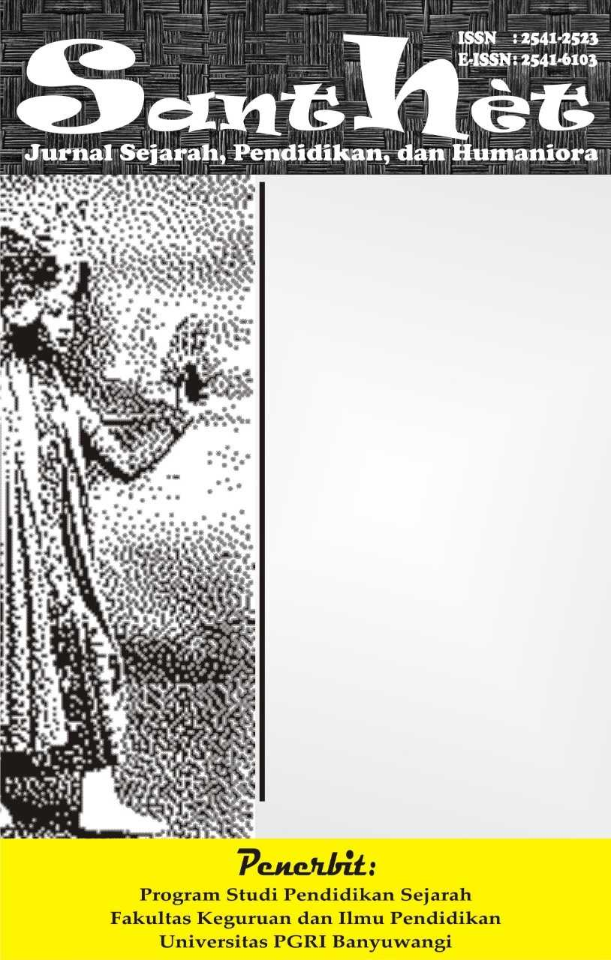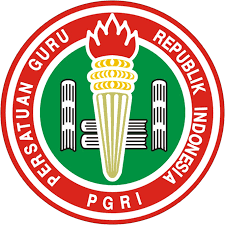Makna Tari Kabasaran Mengandung Nilai Kearifan Lokal Masyarakat Minahasa
DOI:
https://doi.org/10.36526/santhet.v8i1.3266Keywords:
Keywords: Meaning, Kabasaran Dance, Local Wisdom Value, Minahasa PeopleAbstract
ABSTRACT
This research is an effort to explaining, keeping and preserving Kabasaran traditional dance from extinction in Minahasa North Sulawesi. This research entitles Meaning of Kabasaran Dance Contains Local Wisdom Value of Minahasa.People . The objective of this research namely to identify and describe meaning and value in Kabasaran dance and to describe the supporting parties that can make Kabasaran dance still exist in digital era as well as be bequeathed to the next generation. The method used in the research is descriptive qualitative method. The data were collected from informants by interviewing and recording. Based on the result of research, Kabasaran dance has been exist in Minahasa since colonial era. This dance was born from brave people in Minahasa called Waraney. Kabasaran dance is a war dance, showing the tradition of war from the Waraney in Minahasa. It has three stages, those are Sumakalele, the dancers make movements like preparing for war; Kumayak, tells if they win in the war, then they will cut and stab the head of enemy to be brought home. And third Lalayaan, movements for expressing their thankful and happiness of Waraney in winning the war such as claping hands, holding hands and making circle. In Kabasaran dance, it is reflected or contained the local wisdom values of Minahasa people that can be seen from the movement, the words sung, the dress and its color, accessories that put on and the war equipments. For keeping and preserving the Kabasaran dance, cooperated spirit of many parties in North Sulawesi in particular Minahasa, are needed such as government giving aid to make dance small house, making competition and tourism package for tourist; school and university, putting Kabasaran dance as an extracurricular activitiy, and making dance small house; cultural practitioner, inviting young generation to join Kabasaran dance practice both in their school or surrounding, and cultural lover, making dance small house, asking young persons to practice and even making competition of Kabasaran dance annually.
References
Baghramian, Maria. “Relativism About Science”. Dalam buku The Routldge Companion to Philosophy. Hlm. 236-247.
Foley, W. 1997. Anthropological Linguistics in Introduction. USA: Blackwell publisher.
Givon, T. 1984. Syntax: A Functional Typological Introduction. Amsterdam/Philadelphia: John Benjamins Publishing Company.
Hermantoro, H. 2011. Creative-Based Toursim. Yogyakarta: Galangpress.
Hickerson, N. 1980. Linguistic Anthropology. New York: Holt, Rhinehart and Winston Inc.
Kalangi, N. 1980. Kebudayaan Minahasa. Dalam Koentjaraningrat (Ed.). Pengantar Ilmu Antropologi. Jakarta:
Kincaid, Harold, dkk (ed.). 2007. Value-Free Science? Ideals and Illusions. Oxford: OxfordUniversity Press.
Lyons, J. 1977. Semantics. I – II. Cambridge: Cambridge University.
Matthews, P.H. 1978. Morphology: An Introduction to the Theory of the Word-Structure. London: Cambridge University Press.
Meri, La. 1965. Dance Composition: The Basic Elements. Massachusetts: Jacob’s Pillow Dance Festival, Inc.
Renwarin, P.R.2007. Matari Wo Tona’as. Jilid 1. Cahaya Pineleng. Jakarta.
Salzmann, Z. 1993. Language, Culture, and Society: Introduction to Linguistic Anthropology. USA: Westview Press.
Sumardjo, Jakob. 2000. Filsafat Seni. ITB Press.
Spradley, J. 1979. The Ethnographic Interview New York: Holt, Rinehart and Winston. Wenas, J. 2007. Sejarah dan Kebudayaan Minahasa. Institut Seni Budaya Sulawesi Utara.





























